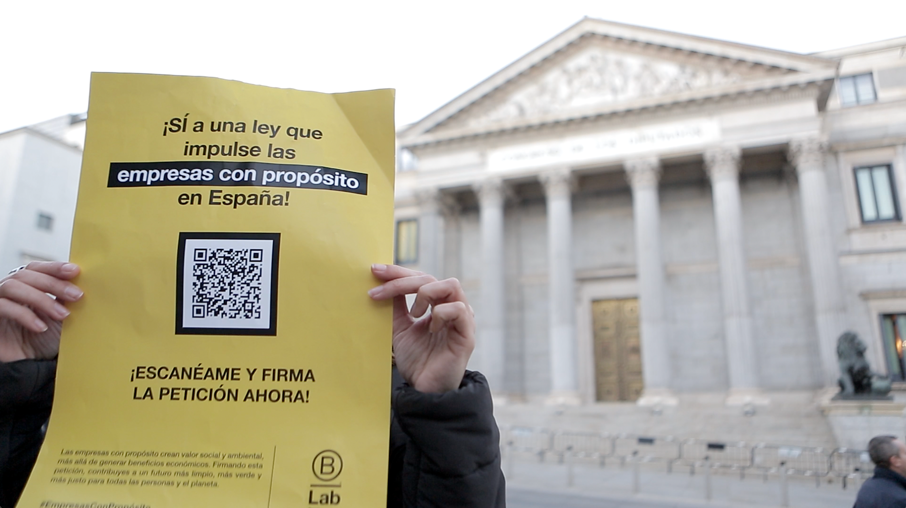While corporate storytelling is nothing new to the world of marketing, the kind of stories we tell and the trends we follow are constantly changing. Just as we have gone from watching daytime TV to being hooked on the latest Netflix series, the kinds of stories we connect to as an audience are evolving, and the world of marketing and corporate communication is no exception.
In a statement during a training session for the Association of Communication Managers, Dircom, Laura Garrido, Partner and Director of Strategic PR at APPLE TREE in Madrid, explained: “In the 80’s, the stories companies told were about leadership and the results, as the focus of that point in time called for hyper-fixation on profitability, with the concept of value being tied very explicitly to leadership.” “However, values have shifted since then, and corporate storytelling is now in what we call ‘an era of purpose’. This shift started in the 90s, with the introduction of marketing innovations such as hiring celebrities as brand ambassadors. This continued throughout the 2000s, as corporate narratives of value shifted further away from leadership towards the emotional experiences they offered their audiences, an innovation spearheaded by music festivals and other live events. This brings us to the most recent shift in narrative, where corporations are now judged on their societal commitments, such as caring for their workers, the environment and many other social issues, thus delivering us into the current ‘era of purpose’.”
‘Purpose’ has become a key element in companies‘ business strategies, especially after the COVID-19 health crisis, where citizens expect a greater commitment from brands and organisations to the problems of the planet and society. Purpose is, in itself, a tool to connect organisations’ rationale with society’s needs, and the corporate story plays a fundamental role in conveying this to audiences.
Laura added, “It’s this trend of seeking a purpose for building a better world from a corporate perspective that has led to the creation of movements such as B Corp, which certifies these purpose-driven corporations, bringing them much closer to society”. The B Corp movement works with over 200 companies in Spain, building a better world based on sustainability business models.

APPLE TREE has collaborated with B Corp to build a communication style that focuses on what each individual can do to better the environment and society, ensuring the movement’s status as a benchmark of ‘purpose’ in the Spanish market.
Through this collaboration with other B Corp companies in Spain and B Lab Spain, APPLE TREE has helped shape B Corp’s story and bring it into the collective imagination of Spanish citizens, raising awareness of what it means to ‘be B’. To this end, the ’10 Challenges of Being B’ creative campaign was developed, which brought together members of the media, online influencers, thought leaders and the B Corp companies themselves to generate a positive impact on the planet through social networks, other digital channels and guerrilla marketing.
The keys to the corporate story
For Laura Garrido, “consistency and repetition” are fundamental. For the corporate story to become absorbed by our audiences, just like the image: “In our hyper-connected day and age, we are exposed to an advertisement every 10 seconds, which means roughly 6,000 adverts a day. Human beings can only retain a maximum of 18 messages a day, so we have to capture the audience’s attention by connecting with a purpose that matters to them and generate a memorable message”.
While it is true that in recent years, the channels and formats through which we can impact and connect with audiences have expanded, “the possibilities are now fewer“. Laura adds: “It doesn’t matter if you are a small or a large company, as we all compete for message visibility in the attention economy. In whichever format you choose, a news item in a newspaper, a digital ad, or a post on social networks… the window of opportunity is very small, and many brands are competing for it. That’s why what we say to our audiences has to have a meaning for those who read it, and it has to be repeated several times for the message to sink in”.
Four things to bear in mind when working on corporate storytelling in the age of purpose.
- Understand your audiences well: You have to bear in mind that your audiences may not only be your customers. Sometimes, your audiences are also institutions, collaborating partners, employees…
- Not everything works out the first time. You have to test and try; times change, and trends change.
- Repeat, repeat, repeat and repeat. Consistency is more important than innovation for innovation’s sake.
- The story has to help you sell. Everything you build, as well as creating a reputation, has to help you sell more.


